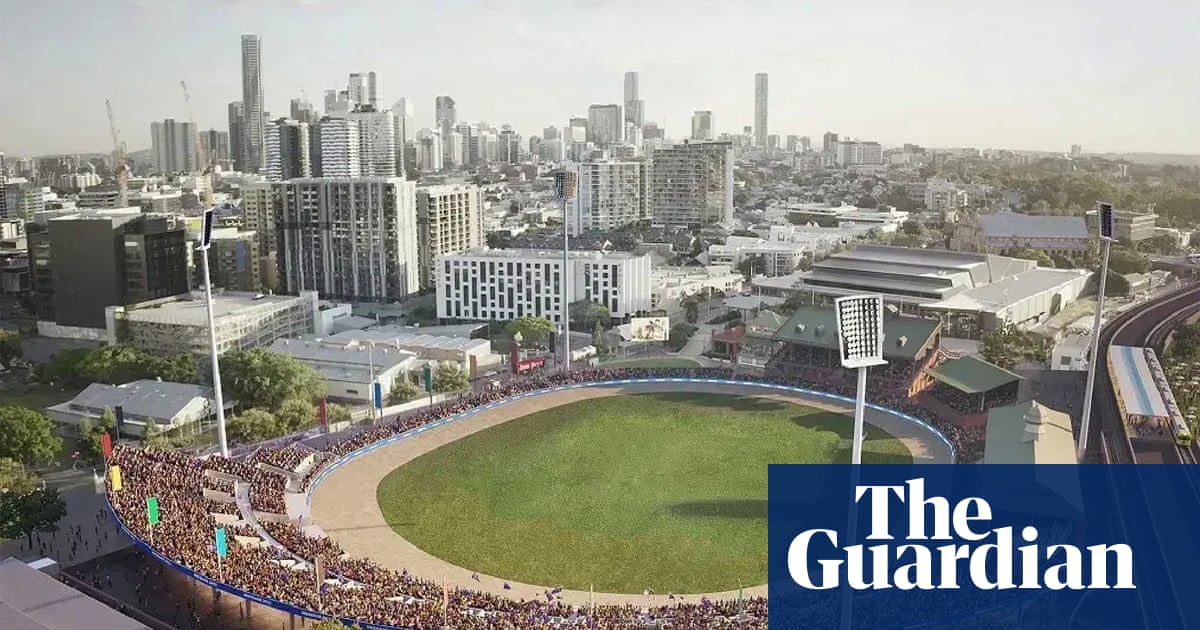As plans for the 2032 Olympic Games were thrown into limbo last year, architect Michael Rayner began to bend the ear of local politicians and Olympics officials about his idea for Victoria Park.
Rayner – a prolific designer who has been described as one of the makers of modern Brisbane – proposed Victoria Park as an Olympics precinct in a 2019 lecture, years before the city’s bid for the 2032 games was even viewed as a frontrunner.
The venues plan announced last week – including the controversial decision to locate swimming and athletics venues in the 64ha heritage-listed public parkland – closely resembles Rayner’s 2019 vision.
He says he had put the idea – which was ultimately recommended – up to the 2024 venues review led by the former mayor Graham Quirk.
Over the past year, amid uncertainty about Olympics plans either side of a state election, Rayner says he met Olympics organising committee chief Andrew Liveris and other directors, and Brisbane mayor Adrian Schrinner to promote his plan to use Victoria Park as main precinct.
“Funnily enough some things can happen at seemingly the last minutes, but I started six years ago,” Rayner says.
“Things can take time for people to process what you’re proposing. I’m glad I had shown it to someone of that importance during the whole thing.”
Perhaps more than anyone else, Rayner has contributed to the building of modern Brisbane. He has designed, or been involved in the design of skyscrapers (111 Eagle Street), bridges (Kurilpa), cultural venues (the Brisbane Convention and Exhibition Centre), ferry terminals and master plans for key precincts (the city centre and Newstead-Teneriffe).
He says the idea for locating Olympics venues at Victoria Park emerged from the city leaders’ plans to transform the area – the city’s largest inner-city parkland, then used as a golf course – into something resembling New York’s Central Park or London’s Hyde Park.
Rayner says the problem with that vision is that Victoria Park was not “a real central park” because it is on the fringe of the inner city, and under-used. The development of a “new metropolis” at Bowen Hills, over the Mayne rail yards, would mean Victoria Park would become “a city defining opportunity” that linked the old CBD to the new high-density area.
The Olympics venue plans announced by the state government appear to align with that idea, and include a high-density athletes village at the RNA showgrounds at Bowen Hills.
“Knowing [Schrinner] was trying to create this revitalised public park, I wanted to show him how I thought the park could be retained while also putting in these facilities,” Rayner says.
“The bigger point here about not locating things in a happenstance way. The sum is greater than the parts and you can see what else could happen if you did create an Olympic park there.”
after newsletter promotion
Rayner says he presented a proposal to the 100-day venues review that included options for a stadium, aquatic centre and indoor arena all within a single Victoria Park precinct.
He says the stadium could be constructed in a way that took up 12% of the total parkland; with an aquatic centre, it would require about 20% of the 64ha.
Those figures are challenged by supporters of retaining the park, who say the stadium would probably require more surrounding land. They say the shape and topography of the site would make it difficult to locate a stadium in a way that doesn’t split any remaining green space into fragments.
Rayner says building a stadium would “energise the park”.
“If you think about the park being rarely used, it would breathe life into the park. That’s why I didn’t necessarily agree with people wanting to keep every blade of grass as it is.”
“I wanted to show how this piece fitted into a bigger jigsaw of the whole city centre – looking at what Victoria Park could mean to Bris in 20 or 30 or 40 years’ time.”
Rayner’s 2019 plan proposed linking the city botanic gardens, Roma Street parkland and Victoria Park as a green corridor, further activating the river, and making the CBD more pedestrian-friendly.
He says the city needed new attractions before the Olympics, including a new museum.
“We now know where all the venues are but the question now becomes: what are we now doing for legacy for Brisbane? What else?”
